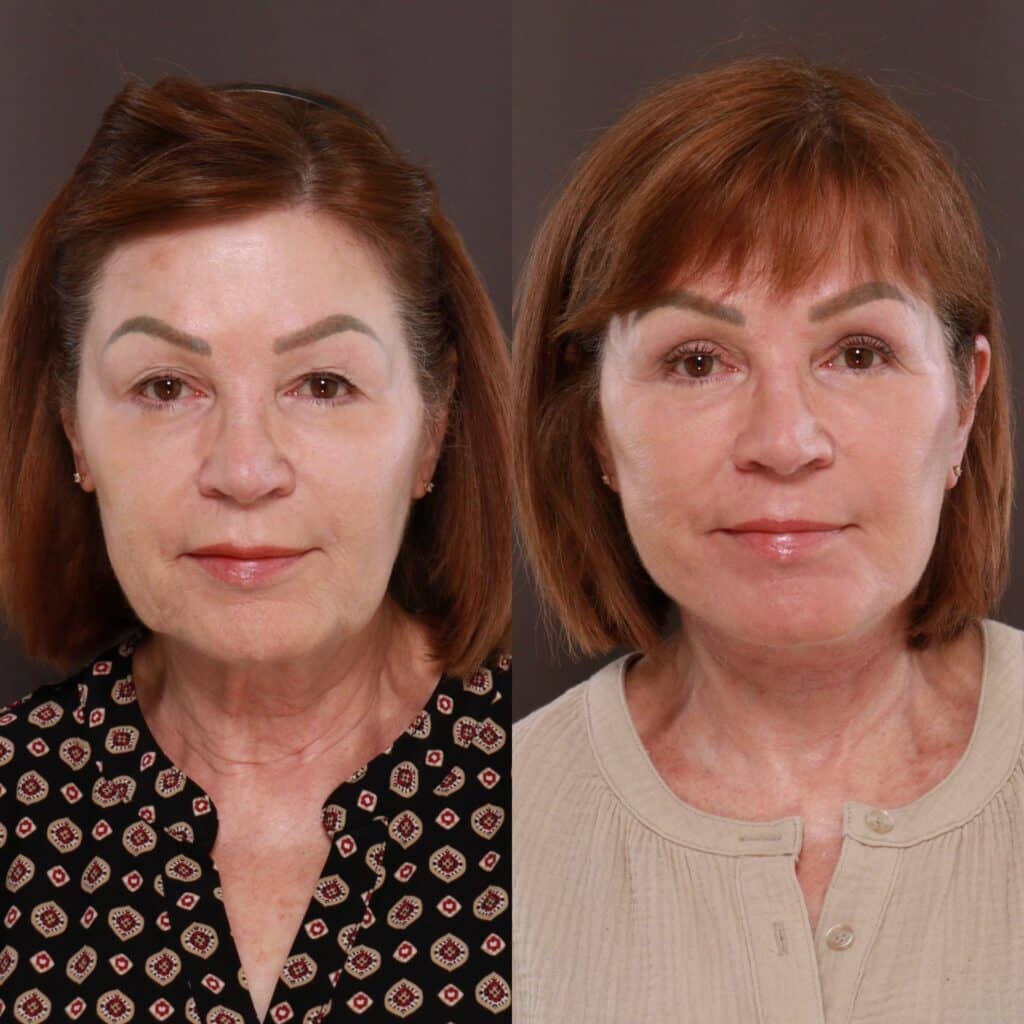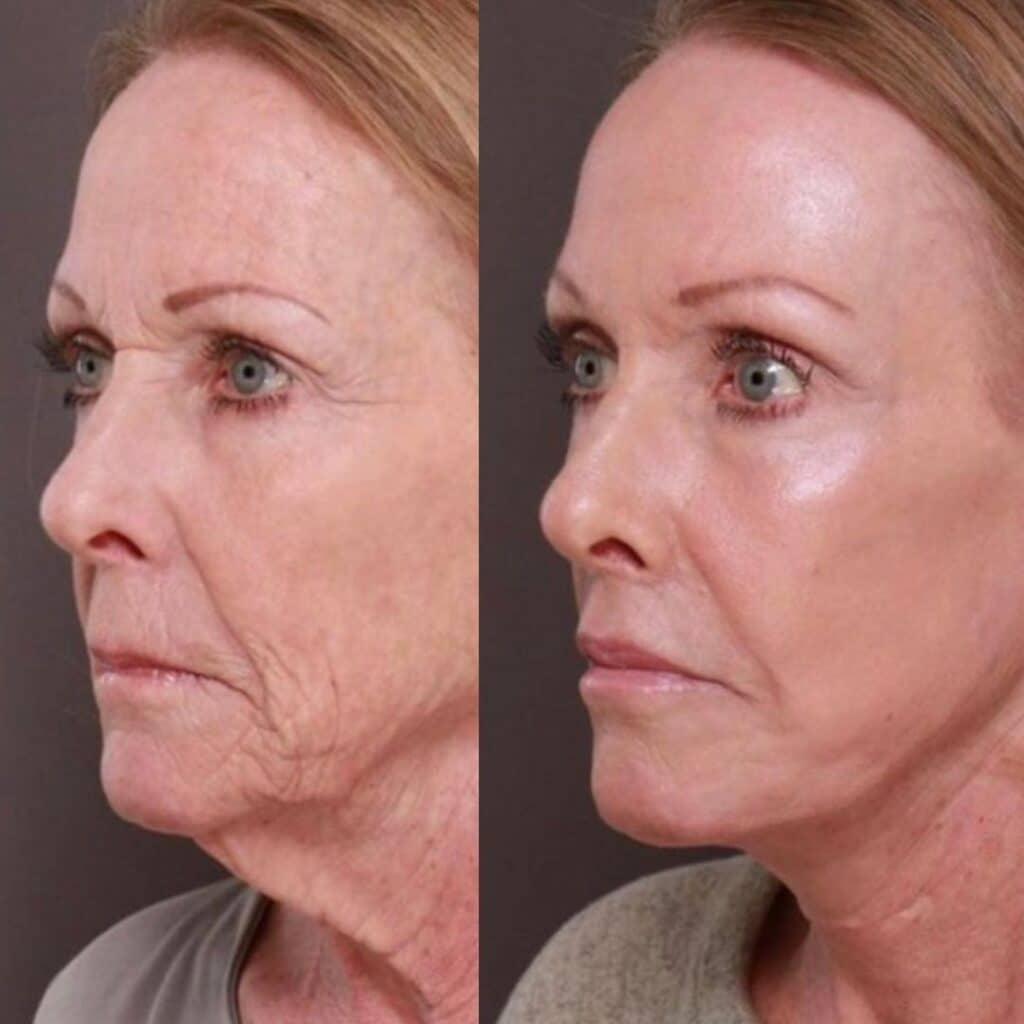Many people find themselves contemplating face contouring surgery as a way to enhance their appearance or correct facial asymmetry. The idea of reshaping features like the jawline or cheeks can sound both exciting and daunting. You might wonder what the procedures really involve, how they’ll change your look, and what impact they’ll have on your confidence. That’s where this guide comes in—let’s explore the ins and outs of face contouring surgery, from the various techniques available to the expected results, all while ensuring you make informed decisions. Whether you’re just curious or seriously considering this journey, understanding the options is an essential first step.
Face contouring surgery is a specialized cosmetic procedure aimed at reshaping the facial structure to enhance aesthetics, correct asymmetries, and improve overall appearance. This may involve techniques such as fat transfer, buccal fat reduction, chin implants, and micro-liposuction to achieve a more harmonious and balanced facial profile while promoting natural beauty.
Overview of Face Contouring Surgery
Face contouring surgery aims to reshape facial structures—think jawlines, cheeks, and foreheads—to create a more balanced and aesthetically pleasing appearance. This advanced procedure addresses issues like asymmetry or underdevelopment while enhancing the natural beauty of the face, all without crossing into the realm of artificiality.
With society’s growing appreciation for personalized aesthetics, demand for these surgeries is steadily rising, prompting more people to explore their options.
Types of Procedures
To achieve these remarkable results, face contouring involves various techniques tailored to individual needs. Common procedures encompass bone shaving, where excess bone is removed or repositioned to refine the facial structure—often sought by individuals looking for a sharper jawline or cheekbones.
Then there’s fat grafting, which transfers fat from areas like the abdomen to enhance facial volume in cheeks and temples. In cases where patients desire greater definition, implants may be introduced to strengthen weak features such as the chin or brighten hollowed features such as dark circles under the eyes.
It’s captivating how each technique offers a distinct avenue for achieving an elegant aesthetic, allowing surgeons to craft a unique outcome that reflects the patient’s vision.
For example at Utah Facial Plastics in Salt Lake City, UT facial fat transfers are often combined with other surgical procedures, such as Contour Laser TRL Deep Resurfacing Treatments, upper and lower blepharoplasty, or a facelift, to enhance facial symmetry and deliver more comprehensive, harmonious results.
Here’s an example of what Contour Laser TRL Deep Resurfacing Treatments can do when combined with fat transfers can do for facial contouring and restoration.
Advancements in Technology
The field of face contouring surgery has benefited enormously from technological advancements. For instance, 3D imaging has become an invaluable tool for pre-operative planning, enabling surgeons to visualize potential changes in intricate detail before they begin.
This technology allows both doctors and patients to collaborate on surgical goals effectively, paving the way for more precise results that align with expectations. Furthermore, innovations such as computer-assisted surgical planning enhance safety and minimize recovery times and complications by ensuring every incision counts.
As these groundbreaking techniques continue to evolve, understanding different approaches becomes essential in making informed decisions about one’s aesthetic journey.
Face Contouring Techniques
Techniques for face contouring have progressed significantly over the years, offering patients options to reshape their features without compromising on safety or results. In this landscape of cosmetic procedures, patients can choose from a variety of techniques tailored to their unique anatomy and desired outcomes. While these options present newfound opportunities for transformation, they come with distinct benefits and potential drawbacks that require thoughtful consideration.
Minimally Invasive Methods
One popular choice among patients who prefer to avoid more extensive procedures is minimally invasive methods. These techniques prioritize patient comfort while achieving noticeable results. For instance, micro-liposuction is particularly effective for removing small fat deposits from areas like the cheeks or chin. This method involves tiny incisions, making it minimally invasive; hence, recovery time is generally quicker. If you’re looking for subtle changes without the commitment of major surgery, micro-liposuction can be an ideal choice.
As always, it’s essential that those considering this method engage in detailed discussions with their surgeon about expectations, risks, and suitability for their specific needs.
Non-Surgical Facial Contouring Options
Contour TRL: Deep Resurfacing with Powerful Contouring Benefits
Contour TRL is a customizable Erbium YAG laser treatment designed to resurface aging, sun-damaged, and dull skin—layer by layer. As one of the most advanced laser technologies available, Contour TRL not only improves the appearance of fine lines, deep wrinkles, crepey texture, and pigmentation, but also enhances facial contour by tightening and smoothing skin in targeted areas.
Because it penetrates with precision and depth, this treatment stimulates collagen remodeling, which can lead to firmer, more lifted features—especially along the jawline, cheeks, and under the eyes. Whether you’re looking for subtle refinement or a dramatic transformation, Contour TRL offers tailored resurfacing options—from light peels to deep rejuvenation—making it an ideal non-surgical solution for both skin quality and facial definition.
Here’s an example of a patient who combined Contour TRL with a facelift at Utah Facial Plastics:
Advanced Surgical Techniques
If you’re seeking more pronounced changes, advanced surgical techniques may suit you better.
Among these options, facial bone contouring and fat transfer stand out as common choices. Bone contouring often involves reshaping prominent bones—such as the jawline—which can create a sharper profile but comes with increased invasiveness and recovery times that can last anywhere from 4 to 6 months.
Conversely, fat transfer utilizes the patient’s own fat to fill in hollow areas of the face. This technique not only leverages body fat but also results in a rejuvenated appearance in areas like the cheeks. The recovery period here is moderate—approximately 2 to 3 weeks.
Each technique provides its unique approach; therefore, individuals should align their aesthetic goals with the right method suited to their needs. A thorough consultation with a reputable plastic surgeon is crucial to navigate these options effectively while ensuring safety and optimal results. As we explore further, let’s examine specific alterations to key facial features that many seek to perfect.
Chin, Nose, and Cheek Alterations
Chin augmentation is a procedure that many individuals consider to create a more pronounced jawline. Whether it’s through implants or reshaping the bone itself, this surgical intervention can effectively correct a receding chin, resulting in a stronger profile. This has become especially popular among those in industries where appearance matters significantly, such as actors and models. They often find themselves opting for chin augmentation not just for personal satisfaction but also for professional reasons—after all, an enhanced jawline tends to photograph better and can accentuate other facial features beautifully.
Moving upward on the face, we arrive at rhinoplasty, commonly known as nose surgery.
This procedure involves making adjustments to the width, shape, or bridge of the nose. The impact of rhinoplasty cannot be understated; it plays a crucial role in influencing overall facial symmetry. It’s noteworthy that rhinoplasty isn’t merely about vanity; for many patients, it also addresses functional issues such as difficulty breathing due to structural abnormalities.
As we explore further into facial contouring procedures, cheek enhancements offer another pathway to achieving youthful appearances.
Many people opt for cheek enhancement through implants or fat grafting to gain a fuller look that can often diminish with age. This procedure can dramatically rejuvenate one’s face, helping to reverse signs of aging by restoring volume in areas that may have lost plumpness over time. Patients frequently report feelings of renewed confidence post-surgery—simply because they see their reflection match their vitality on the inside.
While undergoing procedures like chin augmentation, rhinoplasty, or cheek enhancement can lead to significant aesthetic changes, it’s essential for prospective patients to weigh their desires against realistic outcomes and commit to careful consideration before proceeding.
Expected Outcomes
The ultimate aim of face contouring surgery is to create a harmonious and aesthetically pleasing appearance that enhances your natural beauty. It’s exciting to think about, but it’s equally crucial to keep expectations grounded in reality. Most patients find that they achieve a more balanced facial structure, which often leads to increased self-confidence. The changes might feel subtle at first, yet they’re impactful enough to boost one’s overall satisfaction with their reflection in the mirror.
Typically, the improvements become more pronounced as swelling diminishes and healing progresses. Initially, patients may experience some discomfort and visible swelling, which is completely normal. It can take up to 12 weeks for full healing, but this varies between individuals—some may notice residual swelling lingering even longer. This is why patience during recovery is vital; it’s a transformative process that takes time.
It’s not just about looking good; it’s about how those aesthetic improvements resonate within and affect daily interactions and self-perception.
Moreover, the results should appear natural and seamless with one’s unique facial features rather than an artificial transformation. Enhanced contours generally result in improved facial symmetry, lifting sagging areas for a more youthful appearance while aligning with individual aesthetic goals.
Thus, understanding these outcomes sets the stage for appreciating the deeper benefits that accompany such surgical transformations. Exploring how these changes impact one’s life can yield valuable insights into the journey of self-enhancement.
Benefits of Face Contouring
 One of the most significant benefits of face contouring surgery is the impressive boost in self-confidence that many patients experience post-operation. Imagine waking up every morning and feeling good about your reflection in the mirror. For many, particularly those who have struggled with insecurities about their appearance for years, this newfound confidence can transform their daily interactions.
One of the most significant benefits of face contouring surgery is the impressive boost in self-confidence that many patients experience post-operation. Imagine waking up every morning and feeling good about your reflection in the mirror. For many, particularly those who have struggled with insecurities about their appearance for years, this newfound confidence can transform their daily interactions.
As individuals begin to feel satisfied with their looks, they often report improved social dynamics and enhanced self-esteem, allowing for a more genuine engagement with those around them.
Athletes and public figures frequently undergo these procedures, not just for aesthetic reasons but to enhance their overall public image—reminding us that how we perceive ourselves can significantly influence our positions in professional and personal spheres. This isn’t mere vanity; it’s about presenting oneself authentically and confidently.
In addition to the psychological benefits, many find comfort knowing that the transformations offered by facial contouring tend to be long-lasting.
Most corrections achieved through these surgical procedures can yield durable results, meaning they don’t require frequent touch-ups or revisions, assuming a stable weight and healthy lifestyle. This longevity is appealing not just for financial reasons but also for peace of mind; knowing you’ve made a substantial investment that pays off over time certainly alleviates any worry.
- Improved facial symmetry: Studies indicate that symmetrical faces are often perceived as more attractive, so contouring can enhance this feature.
- Increased self-esteem: Surveys reveal that many patients experience a noticeable improvement in their self-confidence following surgery.
- Enhanced facial definition: Many patients enjoy a sculpted look with defined cheekbones and jawlines, contributing to a youthful appearance.
And perhaps one of the understated perks is the minimal recovery time involved with these procedures.
Many patients are pleasantly surprised to discover they can resume normal activities within just one to two weeks after surgery. Swelling and bruising typically resolve within two to four weeks, which means life doesn’t come to a complete standstill while waiting for results. Instead, individuals find themselves reintegrating into their routines relatively quickly with a fresh outlook and an improved sense of self.
Following these transformations brings new considerations regarding the safety and possible risks associated with such procedures.
Risks and Considerations
No surgical procedure comes without its own set of risks, and face contouring is no different. Understanding these potential pitfalls not only prepares you for what to expect but also ensures you make an informed decision. Common complications might include infections, scarring, and reactions to anesthesia. This underscores the importance of choosing a highly skilled surgeon who can minimize these risks through expertise and experience.
Another risk involves the possibility of misaligned healing or asymmetry after the surgery. It’s not uncommon for patients to worry about their appearance post-procedure; consequently, having a detailed postoperative plan becomes crucial. This plan often includes follow-up visits to monitor healing and address any concerns that might arise. Don’t hesitate to communicate with your surgeon during this period; they can provide guidance on managing swelling, bruising, or any unexpected changes in appearance.
Common Risks
- Infection
- Scarring
- Hematoma
- Nerve damage
Beyond physical considerations, there are psychological impacts that should also be taken into account.
Psychological Impacts
It’s crucial to recognize that some individuals might experience surgery remorse, feeling uneasy about changes made to their appearance. Such feelings can stem from unexpected shifts in self-perception following surgery. Therefore, seeking psychological counseling both before and after the procedure can help in managing expectations and addressing underlying insecurities regarding one’s facial appearance.
A proactive approach in listening to your emotions during this journey cannot be overstated. It’s normal to feel a mix of excitement and anxiety as you adjust to your new appearance. Conversations with trusted friends or professionals about how you’re feeling can bring clarity and support.
As you consider these factors, understanding them is vital in navigating these decisions successfully.
Finding the Right Plastic Surgeon
The journey to achieving your ideal facial contours begins with selecting a qualified and experienced plastic surgeon. It’s not just about aesthetics; it’s about your safety and satisfaction. Start by seeking a surgeon who holds board certification from the American Board of Plastic Surgery (ABPS). This credential indicates that they have met rigorous standards in training and ethics, which translates to credibility and reliability in their surgical practice.
Next, take note of any professional affiliations your potential surgeon may have. Membership in reputable organizations like the American Society of Plastic Surgeons (ASPS) suggests an ongoing commitment to education and adherence to ethical standards in their field. This can give you peace of mind that your surgeon is dedicated to keeping abreast of the latest techniques and best practices.
Additionally, experience plays a significant role in the surgeon’s ability to deliver excellent results.
When searching, prioritize surgeons who specialize in facial procedures rather than those whose expertise is more generalized. Though even newer surgeons may have substantial training, a specialist will have refined skills specific to face contouring, which enhances success rates. Moreover, a surgeon’s track record—evidenced by numerous successful surgeries—can provide valuable insight into their ability and skill level.
After narrowing down your options based on credentials and specialization, it’s time to enter the consultation phase. This is where you’ll be able to assess not only the surgeon’s professional capabilities but also how comfortable you feel in their presence. During this initial meeting, request to see before-and-after photos of previous patients; these visuals are an essential tool for gauging consistency in aesthetic appeal and outcomes. However, remember that feeling at ease with your surgeon is equally important. Trust your instincts; if something feels off during the interaction or if you don’t feel heard when discussing your goals, consider it a red flag.
Finally, keep an eye on both patient comfort and safety during this process.
Your relationship with your surgeon matters immensely as it fosters open communication throughout your journey. Ensuring that they not only hear but understand your desires significantly contributes to the overall experience. Take this opportunity to ask questions about the procedure, recovery times, risks involved, and anything else that’s on your mind. The transparency with which they answer will reflect their professionalism and commitment to both your health and beauty goals.
Bringing together all these factors—credentials, specialization, and consultation experiences—will guide you in making a well-informed decision regarding your surgery provider.
Pros and Cons of Face Contouring Procedures
Not everyone walks away with glowing feelings. Some patients report needing additional surgeries to reach their desired outcome, which can prolong recovery and add financial strain. One patient mentioned feeling uncertain about the final results even after the initial healing phase as adjustments were needed for more defined contours. It’s crucial for potential patients to understand this aspect as it underscores the complexity involved in achieving satisfying results.
Here’s a breakdown of common pros and cons related to face contouring procedures:
Pros:
- Improved self-esteem
- Better facial symmetry
Cons:
- Costly
- Potential for multiple surgeries
These mixed experiences underscore the importance of setting realistic expectations. Reshaping one’s face is a journey that goes beyond mere aesthetics; it involves emotional and financial commitments that should be considered thoroughly before taking any steps forward.
In summary, while many find transformative benefits through face contouring surgery, understanding both positive and mixed experiences can better prepare potential patients for their own journeys.
Related Resources
- Half Syringe vs Full Syringe All You Need to Know
- Your Complete Guide to Fillers
- Juvederm Volux: A New Filler For a More Defined Jawline
- What Does Jawline Filler Do? Benefits, Side Effects
- How Jaw Filler Improves Your Jawline
- How to Fix Sunken Cheeks and Hollowed Eyes
- What Does Jawline Filler Do? Procedure & Side Effects
- How Much Does Fat Grafting Cost?
Let us help you reach your aesthetic goals today!




